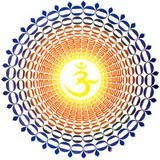
Introduction of upnishad
The word 'Upanishad' in Sanskrit language means upa (near), ni (down) and shad (to sit), which can be summed up as 'to sit down near' (and receive instructions). The teacher and student or a spiritual master and his disciples setting were not always prevalent in strict sense. In some cases, it was husband answering questions about immortality to his wife or a teenage boy was being taught by Yama (God of Death). The teachers, in some cases were women sages and the seekers of inspiration were kings. Besides dialogues, Upanishads also contain narrations, similes, metaphors, illustrations and symbolism.
In the quietude of caves and monasteries or ashrams situated on the banks of holy Ganges, this mystic knowledge was exchanged for centuries. It can be said that Upanishads are collection of writings representing oral transmission of such knowledge.
Most of the Upanishads are either commentary on or are an extension of four Vedas and in most cases constitute Vedanta (the end or an ultimate part of Veda). The characteristics of the Upanishads are their universality and the total absence of any dogmatism. Upanishads elaborate upon highest metaphysical state, beyond which is the realm of Silence.
Upanishads are considered as the backbone of Hinduism. The thoughts expressed inside Upanishadic cluster forms the core of Indian philosophy. One can find doctrines of Karma (action), Yoga (union), Punarjanma (rebirth), moksha (liberation), atma (soul) and brahman (super soul), inside these scriptures. Upanishads also gives valuable insight into Hindu belief system behind the creation of universe and the reasons behind its sustenance.
According to Historians, Upanishads were composed between year 800-400 B.C. Experts differ on total number of Upanishads, but most agree on 108. Major among them are Chhandogya & Kena (Sam Veda); Aitareya & Kaushitaki (Rig Veda); Katha, Taittiriya, Brihadaranyaka, Svetasvatara, Isa & Prasna (Yajur Veda); Mundaka & Mandukya (Atharva Veda). From various elaboration found inside Upanishadic verses, it can be said that, sages like Yagnavalkya, Uddalaka, Aitareya, Pippalada, Sanat Kumar, Shwetaketu, Shandilya, Manu and even Maharshi Narada disseminated Upanishadic knowledge and thus, can be said to be their authors.
Upanishads are acknowledged as pinnacle of human wisdom. None other scripture of that time can claim to contain such sublime and noble thoughts as found inside Upanishads. Written almost at the time of the dawn of civilization, Upanishads continues to evoke tremendous interest even today, among literates of both, East as well as West.
Here, we will present select Upanishads along with their text, meaning in Gujarati and Shri Yogeshwarji's comments from his book entitled 'Upanishad No Amar Varaso'.
Let's begin our quest by this Upanishadic prayer:
ॐ असतो मा सद्गमय । तमसो मा ज्योतिर्गमय ।
मृत्योर्मा अमृतं गमय । ॐ शांति शांति शांतिः ॥
"From the untruth (unreal), lead me to the truth (real)!
From veil of ignorance (darkness), lead me to knowledge (light)!
From clutches of death, lead me to immortality!
Let there be peace...complete peace."
Download and read from pdf format of upnishad given blow

No comments:
Post a Comment